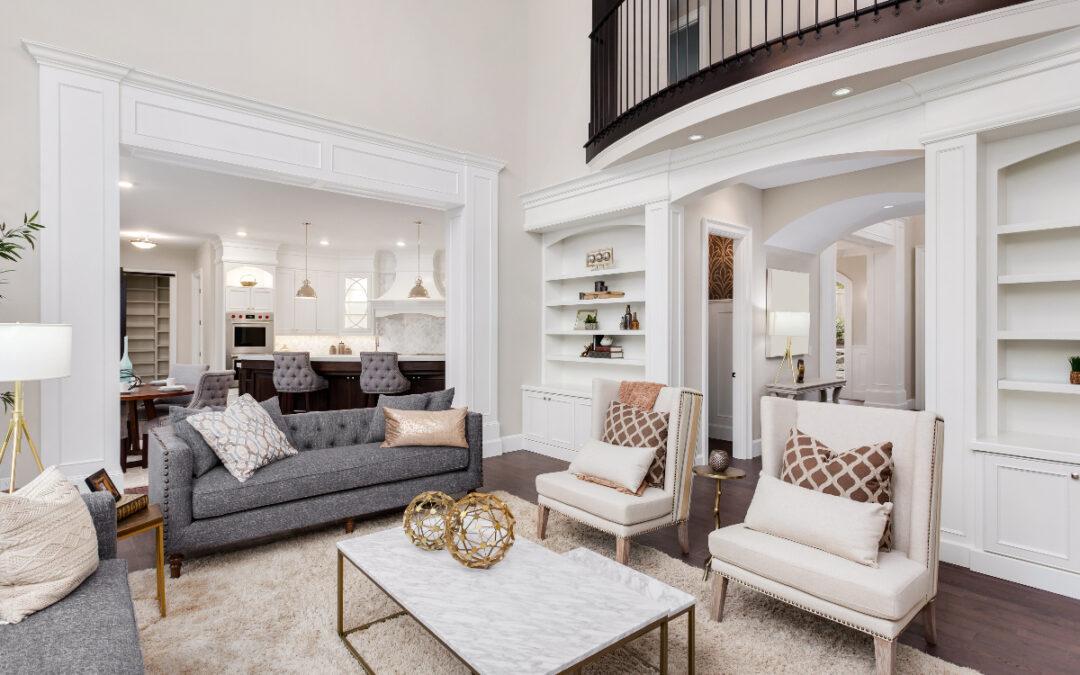Choosing the right rug size is crucial for creating a cohesive and visually pleasing space. A well-chosen rug can tie the room together, add warmth and comfort, and even define different areas within the living room. However, selecting the perfect rug size can be a bit overwhelming with so many options available. It can get so frustrating when you spend so much time looking for the a design you like and finally find one, only to find out they don’t have it in the size you need. One word of advice – don’t just settle – the size is important.
In this article, we will guide you through the process of choosing the ideal rug size for your living room, ensuring that it not only enhances the aesthetics but also meets your functional needs.
1. Measure Your Living Room
Before you start shopping for a rug, it’s essential to measure your living room accurately. Grab a measuring tape and jot down the dimensions of your living room, including the length and width. This step will help you determine the appropriate rug size that will fit the space without overwhelming or undersizing it.
2. Consider the Furniture Layout
One of the key factors to consider when choosing a rug size is the furniture layout in your living room. Take a closer look at how your furniture is arranged and think about how you want the rug to interact with it. Do you want all the furniture legs to be on the rug, or just the front legs? This decision will depend on your personal style and the size of the room.
For a cohesive look, boldly consider placing a large rug that accommodates all the furniture, allowing all legs to rest comfortably on the rug. This approach creates a defined and unified seating area. Alternatively, you can opt for a smaller rug where only the front legs of the furniture are placed on it. This style works well in smaller living rooms or for creating multiple seating areas within a larger space.
3. Define the Area
Another consideration when selecting a rug size is defining specific areas within your living room. If you have an open floor plan where the living room seamlessly blends with the dining or kitchen area, using rugs can help visually separate the spaces. In such cases, it’s important to choose rugs that are different in size, ensuring a clear distinction between each area.
For the living room area, a larger rug that encompasses the seating arrangement is recommended. This helps anchor the furniture and creates a focal point. Smaller rugs can then be used in other areas, such as under the dining table or in front of a reading nook, to define those spaces while maintaining visual harmony.
4. Leave Adequate Space
While it’s crucial to select a rug size that fits your living room appropriately, it’s equally important to leave some space around the edges. Leaving a border of flooring exposed creates a balanced and aesthetically pleasing look. As a general rule of thumb, aim to leave at least 12 to 18 inches of floor space between the edge of the rug and the walls.
By doing so, you create a frame for your living room, making it visually appealing and ensuring that the rug doesn’t overpower the space. This space also prevents the rug from becoming a tripping hazard and allows for easier maintenance, such as vacuuming or cleaning the floors.
Frequently Asked Questions
Q1: Can I use multiple rugs in my living room?
A1: Absolutely! Using multiple rugs in your living room can add visual interest and define various areas within the space. Just make sure to choose rugs that complement each other in terms of style and color palette.
Q2: How do I choose the right shape of the rug?
A2: The shape of the rug depends on the shape of your living room and the furniture layout. Rectangular rugs are the most common choice as they work well with most furniture arrangements. However, if you have a round coffee table or a curved sectional, you might consider a round rug to complement the shape. Square rugs work well in square-shaped rooms or when creating a symmetrical seating arrangement. Ultimately, choose a rug shape that harmonizes with the overall layout and style of your living room.
Q3: How do I determine the right rug size for a small living room?
A3: In a small living room, it’s essential to choose a rug size that doesn’t overwhelm the space. Consider opting for a smaller rug that allows for some floor space to be visible around the edges. This will create an illusion of a larger room. Additionally, choosing a rug with a lighter color or a subtle pattern can also help make the room feel more spacious.
Conclusion
Selecting the perfect rug size for your living room can greatly enhance its overall appeal and functionality. By measuring your living room accurately, considering the furniture layout, defining different areas, and leaving adequate space around the edges, you can achieve a balanced and visually pleasing look. Remember to choose a rug that complements your style and reflects your personal taste while harmonizing with the other elements in the room. With these guidelines in mind, you can confidently find the ideal rug size that transforms your living room into a cozy and inviting space.
Remember, the right rug size is just one aspect of creating an outstanding living room design. Consider other factors such as color schemes, lighting, and furniture selection to create a truly remarkable space that reflects your unique style and personality.
Be sure to checkout our recent post… 10 Easy DIY Home Decor Projects to Try This Weekend.





